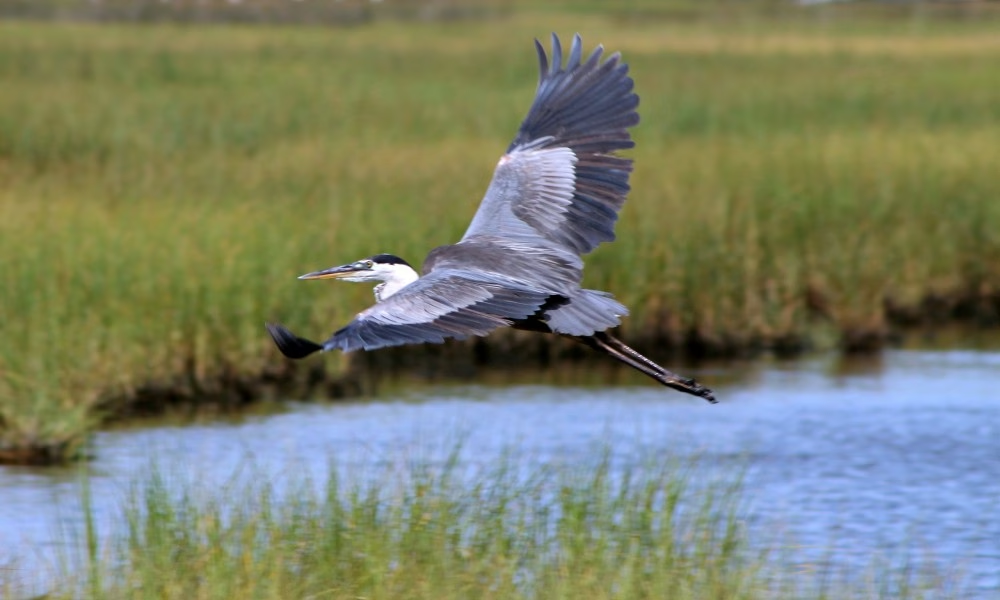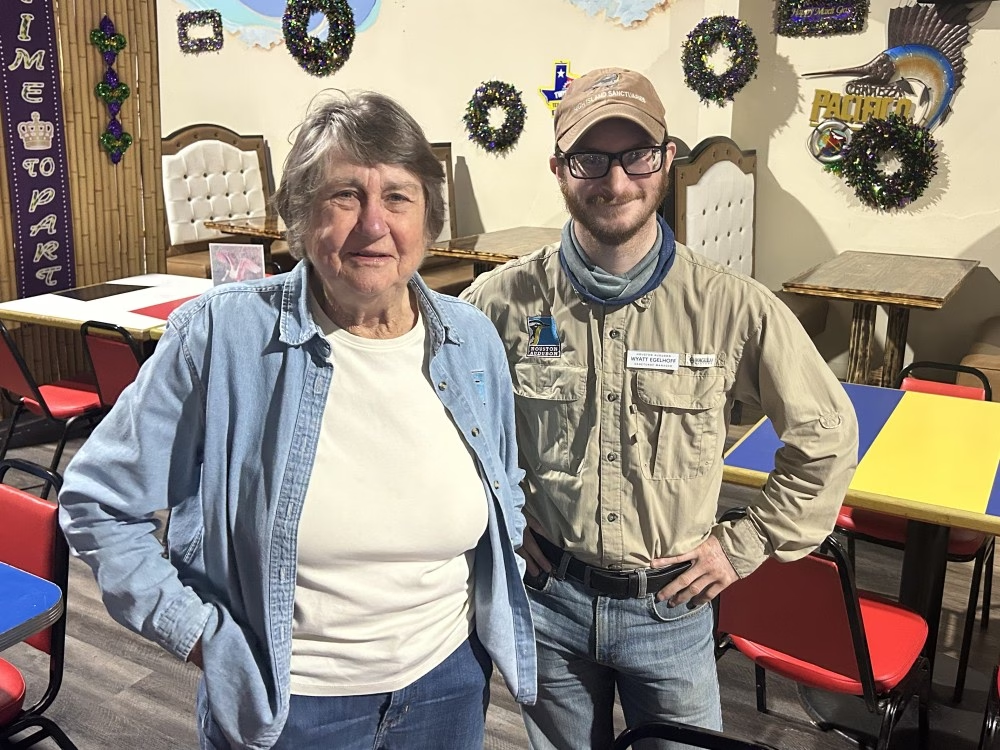
For decades, Bolivar Peninsula has been a treasured location for birdwatching enthusiasts, offering some of the most diverse avian populations in the country. With over 400 documented bird species, this 27-mile stretch of Texas coastline is a vital stopover for migratory birds traveling between North and South America. Its unique geography and carefully managed sanctuaries make it a haven for birds and birdwatchers alike.
At last week’s Good Morning Bolivar, Wyatt Egelhoff, Houston Audubon High Island Sanctuary Manager, gave an excellent presentation on the Bolivar bird sanctuaries and a discussion on the numerous opportunities for people to observe a wide array of bird species in their natural habitat. Following are excerpts from the presentation.
Why Bolivar Peninsula is a Birding Hotspot
The peninsula serves as a crucial hub for migratory birds following major North American flyways. Most birds seen here are migratory, meaning they spend only part of their lifecycle on the peninsula before continuing their journey. Many breed in the northern regions of the U.S. and Canada before heading south for the winter. When they return, Bolivar becomes a refueling station where they rest, feed, and regain strength for the next leg of their journey.
Unlike remote birding locations that require boat access, Bolivar Peninsula offers unparalleled ease of viewing. Here, birders can observe vast flocks without needing special equipment or difficult travel arrangements. With accessible beaches, marshes, and sanctuaries, visitors can experience close-up encounters with some of the most remarkable bird species in North America.

The Best Birding Locations on Bolivar Peninsula
High Island
High Island, a salt dome rising just 38 feet above sea level, is the highest coastal point between Mobile Bay, Alabama, and the Yucatán Peninsula. While the elevation may seem modest, it makes a significant difference in habitat. The island’s live oaks and pecan trees provide much-needed cover for exhausted migratory songbirds arriving from the Gulf of Mexico. Houston Audubon manages a substantial portion of High Island, ensuring its forests and freshwater ponds remain prime birding locations.
The Smith Oaks Sanctuary, part of High Island, is famous for its rookery, where great egrets, roseate spoonbills, and neotropic cormorants nest. The freshwater ponds attract alligators, which play a key role in protecting nesting birds by keeping raccoon populations in check. This sanctuary offers a fascinating look into bird conservation efforts and is a must-visit for anyone interested in avian ecology.
Free Admission to HIGH ISLAND BIRD SANCTUARIES on April 5
Bolivar Flats
Recognized as one of the most important shorebird sites in Texas, Bolivar Flats draws tens of thousands of birds year-round. The presence of the North Jetty has caused sediment and nutrients to accumulate in the area, creating rich feeding grounds for shorebirds like American avocets, black skimmers, and Wilson’s plovers. In winter, up to 12,000 avocets can be found here, while spring migration brings even greater numbers.
Houston Audubon actively manages Bolivar Flats, protecting habitats critical for these birds’ survival. Beachgoers are encouraged to respect designated nesting areas marked by symbolic fencing, which helps protect species such as the least tern and Wilson’s plover. These birds lay eggs directly in the sand, relying on their camouflage for survival—a strategy that can be disrupted by human activity.
Horseshoe Marsh and Rollover Pass
Horseshoe Marsh is another key sanctuary on Bolivar Peninsula, known for its tidal pools that attract wading birds like roseate spoonbills and great blue herons. The marshland also supports threatened species like the black rail, a secretive bird whose distinctive call is often the only sign of its presence.
Nearby Rollover Pass, historically a waterway connecting the Gulf to the Intracoastal Waterway, has evolved into a prime birding site after its closure. With sediment deposition creating additional habitat, species like pelicans, sandpipers, and herons have flourished here, making it a rewarding stop for birders.
Seasonal Birding on the Peninsula
Each season brings unique birding opportunities to Bolivar Peninsula. Spring and fall migrations offer the highest bird diversity, as thousands of birds pass through on their long journeys. Many songbirds, including warblers, tanagers, and flycatchers, can be found resting in the trees of High Island during these times.
Winter is ideal for spotting shorebirds and waterfowl, with large flocks of ducks, gulls, and terns frequenting the coastal waters. Although summer sees fewer species, it provides excellent chances to observe breeding shorebirds, including least terns and Wilson’s plovers, as they nest along the beaches.
Conservation and Birding Ethics
Conserving Bolivar Peninsula’s bird populations requires collaborative efforts between organizations like Houston Audubon and local authorities. The biggest challenges include habitat destruction, invasive plant species, and human disturbance of nesting areas.
Birders can help by respecting sanctuary guidelines, staying on designated paths, and avoiding nesting areas. Supporting conservation initiatives through volunteer work or donations further ensures that Bolivar Peninsula remains a thriving birding destination for generations to come.
A Birding Destination Like No Other
With its diverse habitats, accessible viewing locations, and incredible bird populations, Bolivar Peninsula stands out as one of Texas’ premier birding sites. Whether you’re a seasoned birder or just beginning to explore the world of avian observation, the peninsula offers an unforgettable experience. So, grab your binoculars, head to the coast, and witness the spectacular migration of birds that call this special place home.
Good Morning Bolivar is a monthly breakfast get-together hosted by Bolivar Tourism Center featuring a guest speaker discussing a topic of interest relating to Bolivar Peninsula. Held the second Tuesday of the month, 8:00 am at Jose’s Cantina Restaurant. Open to the public, breakfast is provided. For more information, go to https://www.bolivarpeninsulatexas.com/




